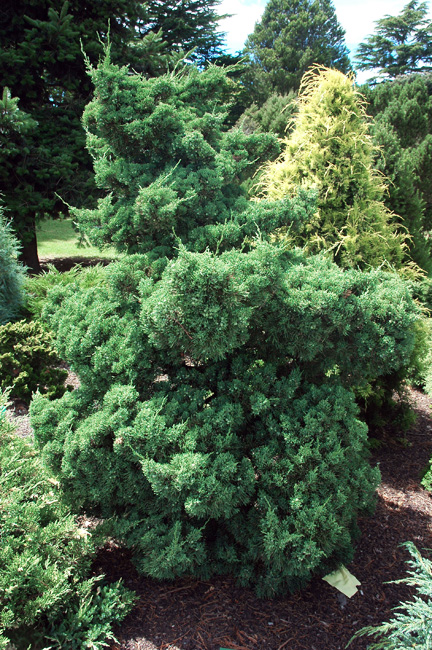| General Description | The shrub is green all year around with beautiful yellow flowers that eventually turn to a blushes purple berry. |
| ID Characteristic | Irregularly twisted, cord like branches; it is green all year round, has yellow flowers in March and green berries in summer that turn purple in the autumn. |
| Shape | It has a large upright round crown and an irregular twist. |
| Landscape | The Kaizuka Chinese juniper has many uses; like informal gardens, flower borders, in front of architectural structures and screening. |
| Propagation | To propagate Kaizuka Chinese juniper you have make semi hardwood cuttings. You will need a well-drained media and some root hormone. The best growing temperature is 25–30 °C. |
| Cultivation | Kaizuka Chinese Juniper grows well in well drain soils but can handle other soils. It can also handle parish to full sun. |
| Pests | This plant may be effected by canker disease. It is also susceptible to aphids, juniper scale and caterpillars. |
| Notable Specimens | Kwantlen Polytechnic University, British Columbia, Canada. Pinetum Park and Pine Lodge Gardens, Cornwall, England. |
| Habitat | Horticultural origin. |
| Bark/Stem Description | The bark is grey-brown and peels off in thin strips; mature bark is ridge and furrow. |
| Flower/Leaf Bud Description | The bud is green and oval with a point; about 2.5 cm. |
| Leaf Description | The leaves are awl-like and they may also cause skin irritation. The adult branches are covered with 4 ranks of leaves in opposite pairs and juveniles are arranged in whorls of 3 opposite pairs; also are green all year around. |
| Flower Description | The yellow to orange flowers bloom in March, and are dioecious. |
| Fruit Description | The fruit are green in the summer eventually turning purple in the autumn and they are about 1.25 cm in diameter. |
| Colour Description | Its leaves are green all year around and the berries turn purple in the autumn. |
| Texture Description | Has a fine texture. |

